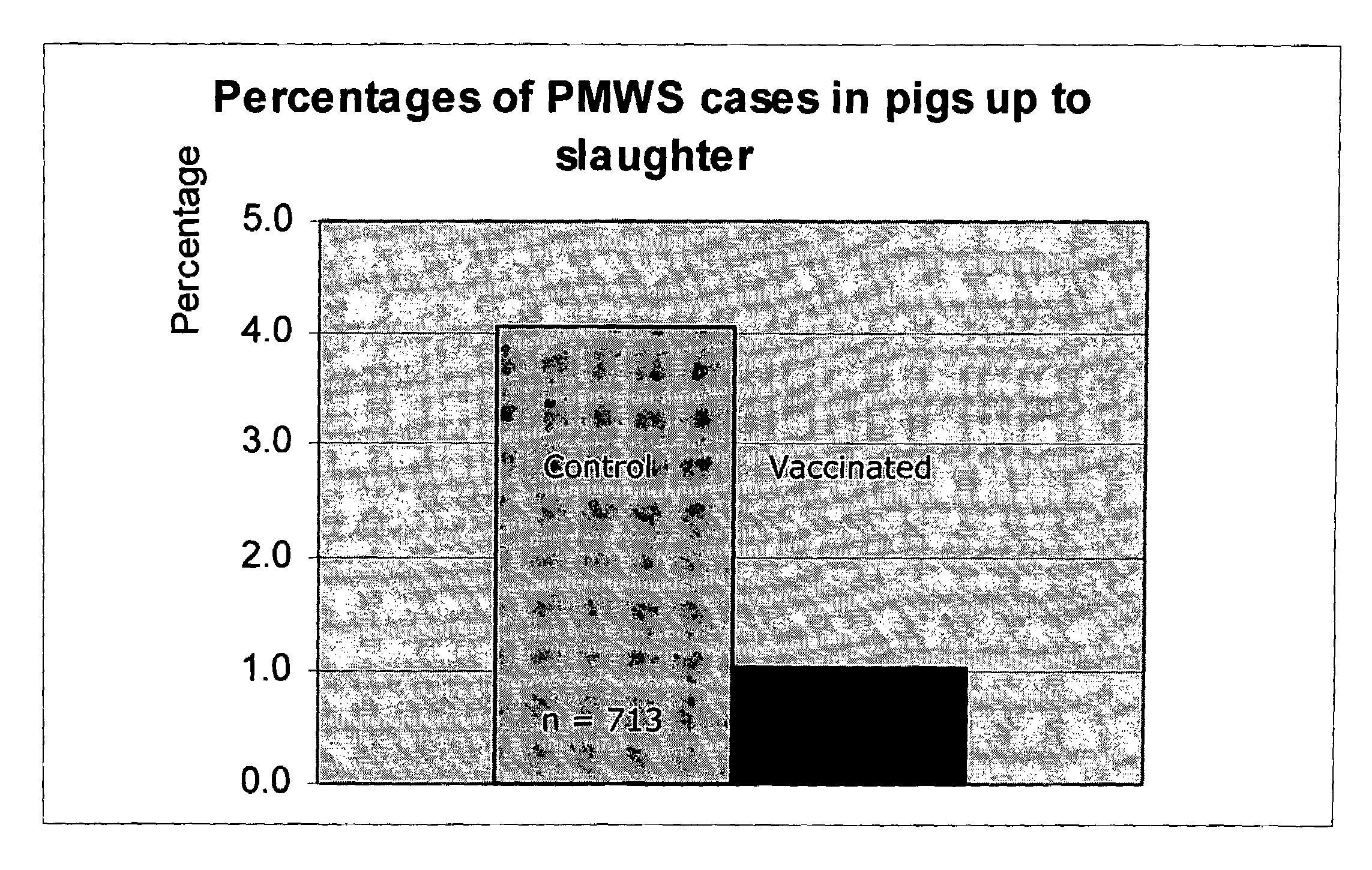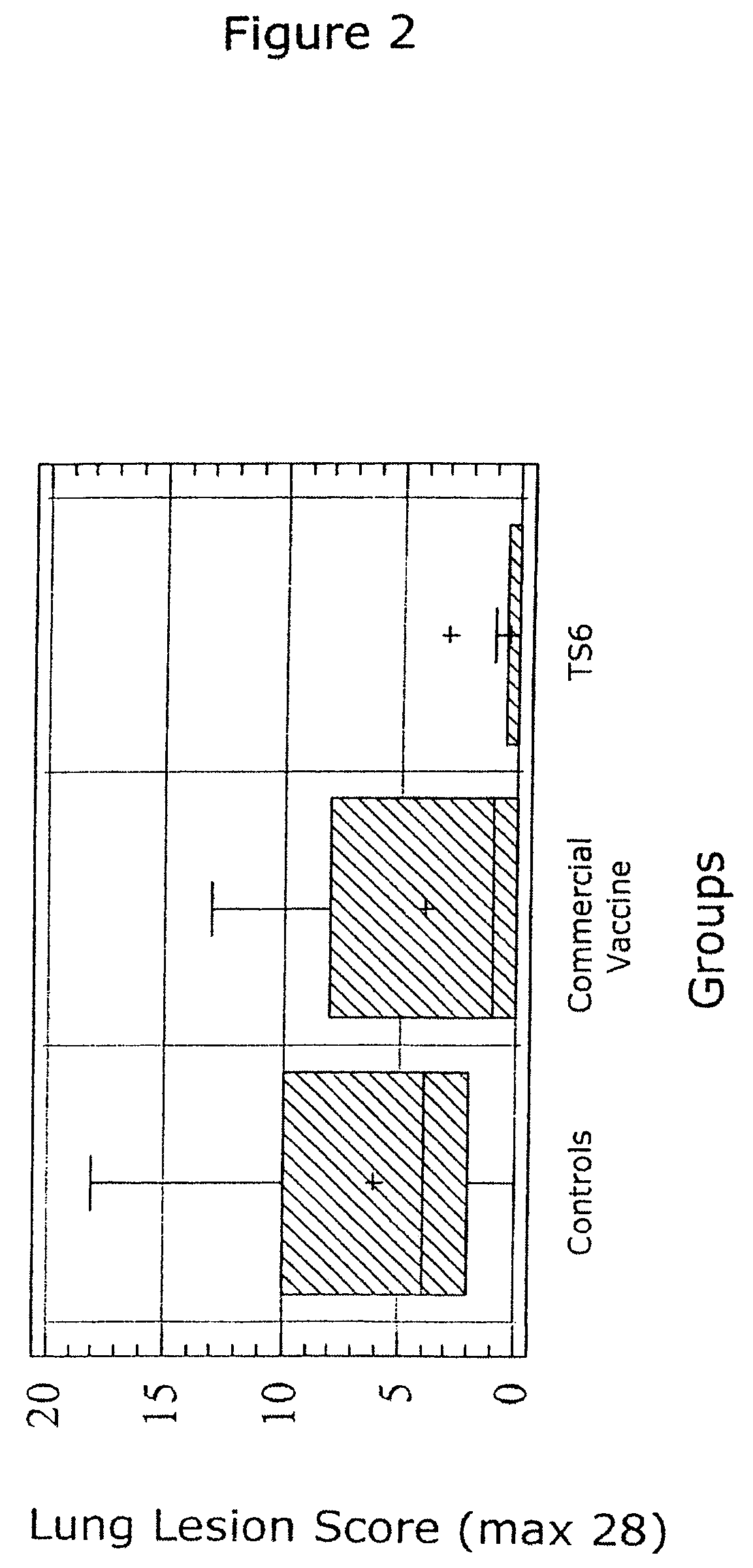Vaccine formulations
a technology of oilin water and formulations, applied in the field of oilinwater emulsions, can solve the problems of stability observation, risk of adverse events, toxicity or local inflammation, etc., and achieve the effect of increasing stability
- Summary
- Abstract
- Description
- Claims
- Application Information
AI Technical Summary
Benefits of technology
Problems solved by technology
Method used
Image
Examples
example 1
Emulsion Manufacturing Method
[0118]The emulsion is produced in two steps as described as follows:
[0119]First Step: A high shear rotor-stator Silverson emulsifier (L4RT type with a disintegrating head with a diameter of 10 mm) was used to produce the formulations. To produce an emulsion, one volume of oily phase was emulsified at 25° C. with one volume of aqueous phase #1. The aqueous phase was added to the oily phase under agitation, 5000 rpm (rotation per minute) for 1 minute. The rotation speed was progressively increased with the augmentation of the volume to 8300 rpm during 1 minute. During this step the emulsion was a water-in-oil emulsion. For the TS6 emulsion, phase composition was as follows:
Oily Phase (120 ml):
[0120]
Sorbitan monooleate (Span 80 ®): 1.8% w / v,Sorbitan trioleate (20 OE) (Tween 85 ®):10.2% w / v,Paraffin oil (Marcol 82 ®): 88% v / v,
Aqueous Phase #1 (120 ml):
[0121]
20% (w / v) solution of sorbitan monooleate11.25% w / v(20 OE) (Tween 80 ®):Phosphate disodic and monopot...
example 2
Determination of the Phase Inversion Temperature (PIT) of an Emulsion
[0130]10 ml of the TS6 emulsion was placed into a glass tube in a water-bath at a temperature of about 25° C. The TS6 emulsion was a white homogeneous emulsion. The temperature in the water bath was progressively increased. Changes in the emulsion were visually observed (the emulsion became two separated phases due to the migration of the yellow-brown oily phase to the surface). This change is characteristic of the break down of the emulsion. The temperature at which this change is observed is the PIT value of the emulsion. For the TS6 emulsion, the PIT was 40-45° C., while the PIT for the TS7 emulsion was 44-49° C.
example 3
Mycoplasma hyopneumoniae Vaccine Composition and Heterologous Challenge
[0131]Materials and Methods: the vaccine composition was formulated containing the TS6 emulsion, prepared as described in Example 1, and inactivated Mycoplasma hyopneumoniae, BQ14 strain (Kobisch M. et al., Ann. Inst. Pasteur Immunol., 1987, 138:693-705) at a concentration of 8.7 log10 CCU (color changing unit) per ml of vaccine. Twenty-two (22) piglets, three weeks old and having maternal antibodies (born from sows seropositive for Mycoplasma hyopneumoniae) were randomly allocated into two groups. One group of ten (10) piglets was vaccinated on day 0 with 2 ml of the vaccine composition by intramuscular injection, while the control group of twelve (12) piglets was not vaccinated.
[0132]At selected intervals during the experiment (days 0, 27, 42, and 56), nasal swabs were taken from piglets in both groups and anti-BQ14 secretory antibodies determined by ELISA. At day 27, piglets were bled and peripheral blood mono...
PUM
| Property | Measurement | Unit |
|---|---|---|
| phase inversion temperature | aaaaa | aaaaa |
| phase inversion temperature | aaaaa | aaaaa |
| phase inversion temperature | aaaaa | aaaaa |
Abstract
Description
Claims
Application Information
 Login to View More
Login to View More - R&D
- Intellectual Property
- Life Sciences
- Materials
- Tech Scout
- Unparalleled Data Quality
- Higher Quality Content
- 60% Fewer Hallucinations
Browse by: Latest US Patents, China's latest patents, Technical Efficacy Thesaurus, Application Domain, Technology Topic, Popular Technical Reports.
© 2025 PatSnap. All rights reserved.Legal|Privacy policy|Modern Slavery Act Transparency Statement|Sitemap|About US| Contact US: help@patsnap.com



